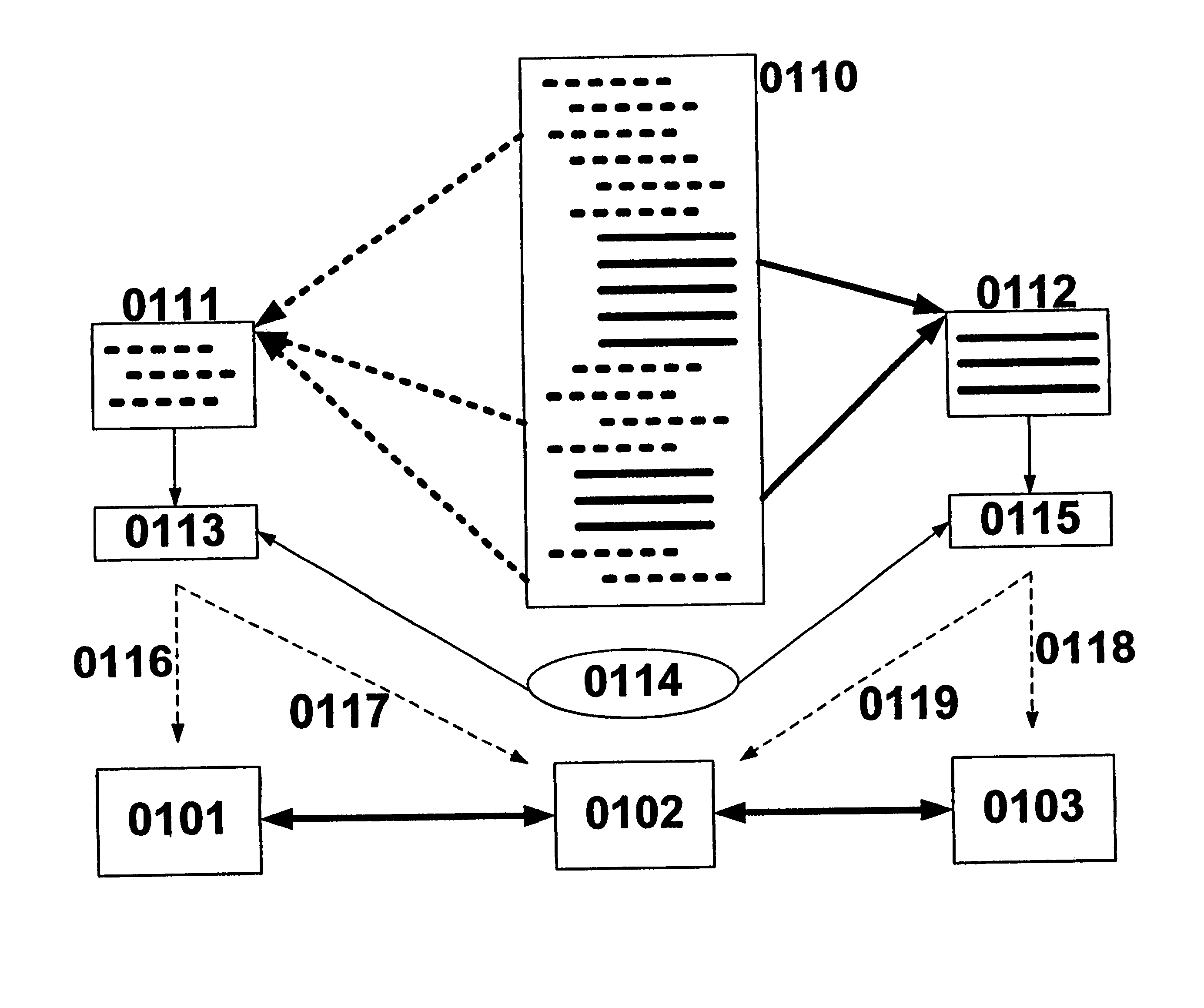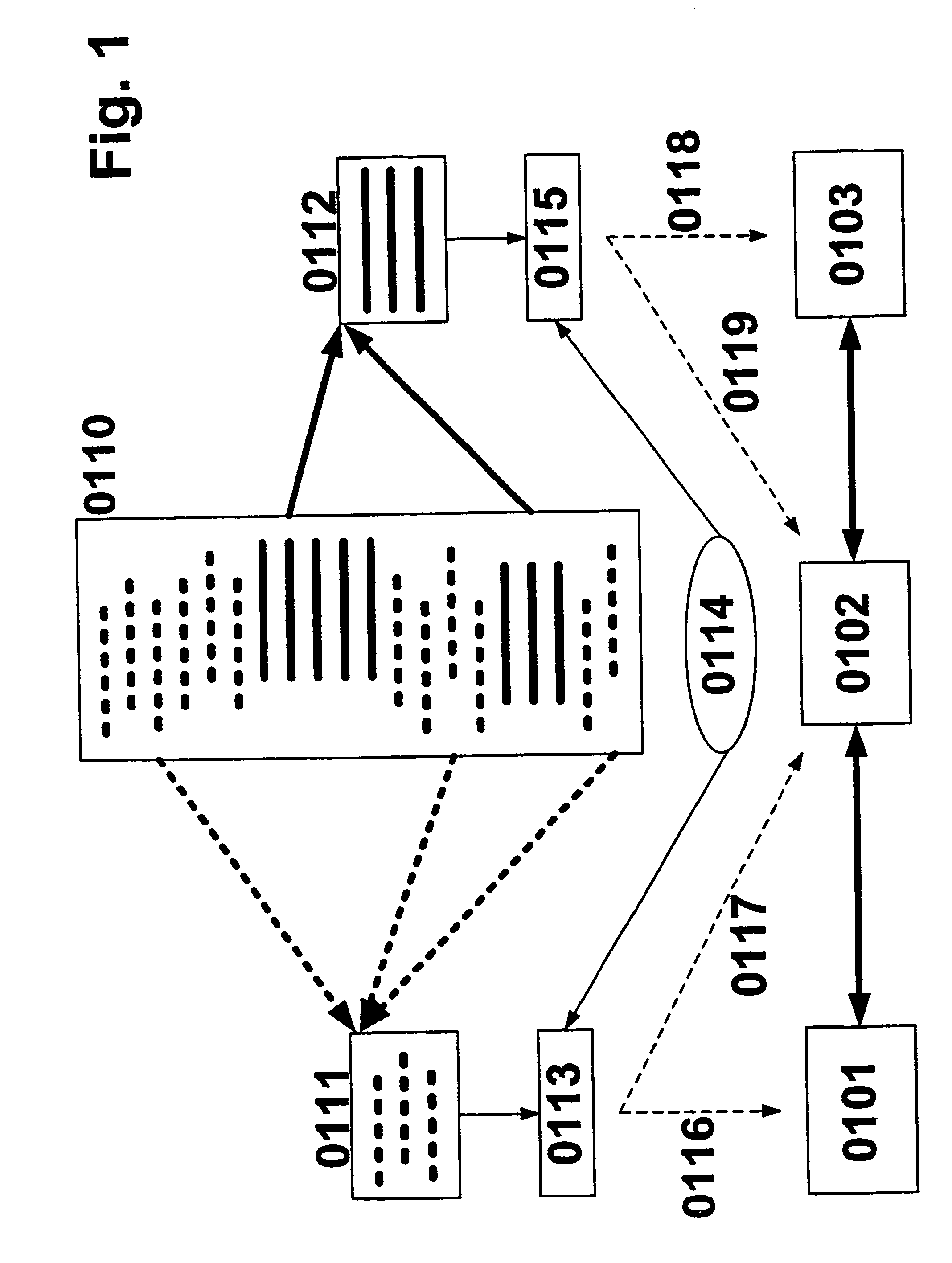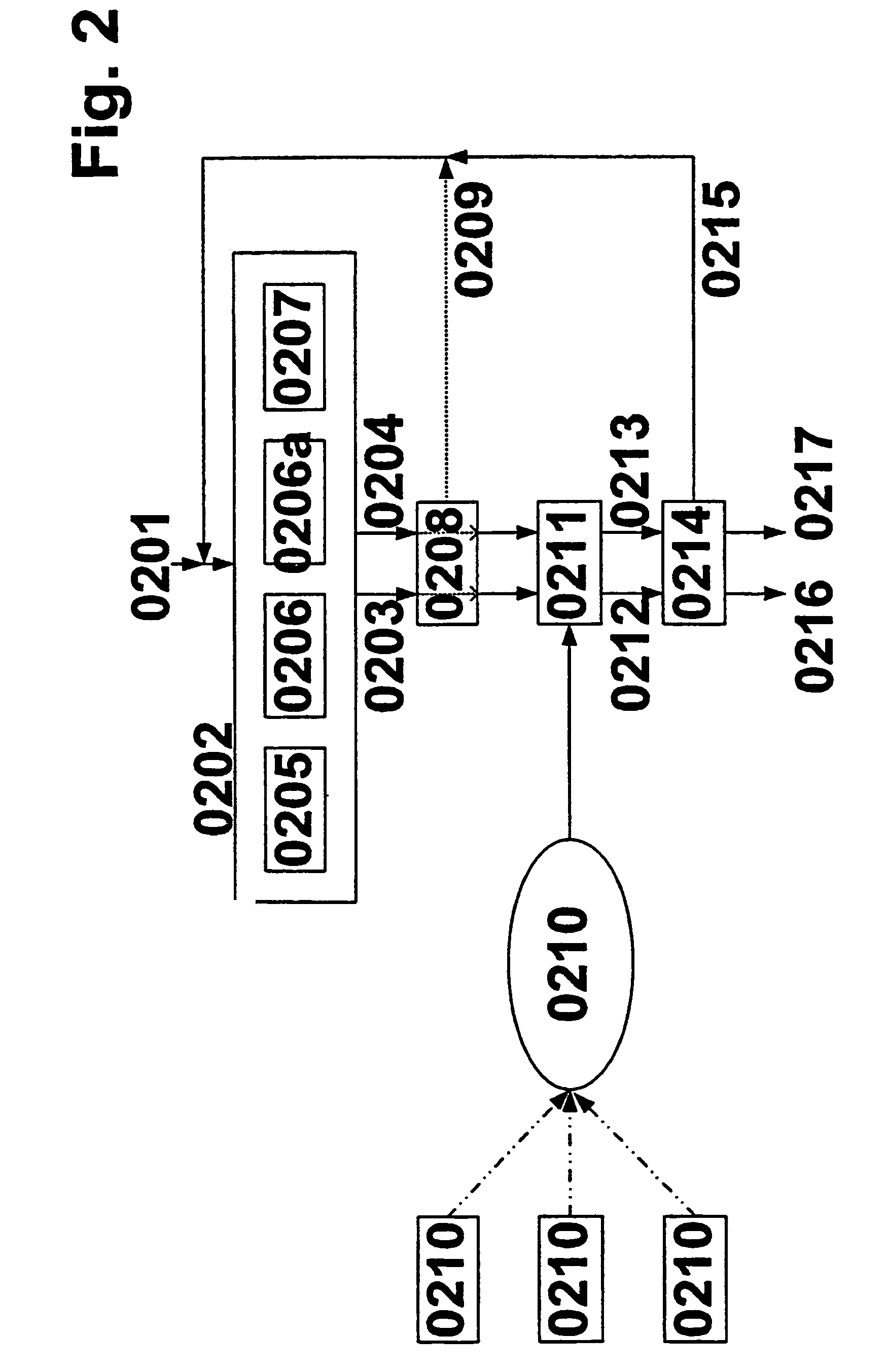Method for processing data
a data processing and data technology, applied in the field of data processing, can solve the problems of incompatibility with existing technical environments and programming methods, inability to adapt to existing programs of cpus, and inability to meet the requirements of data processing, so as to achieve the effect of increasing the performance of data processing and being particularly efficient in performan
- Summary
- Abstract
- Description
- Claims
- Application Information
AI Technical Summary
Benefits of technology
Problems solved by technology
Method used
Image
Examples
Embodiment Construction
[0198]FIG. 1 illustrates an example of, in accordance with the present invention, an example method and shows a possible system structure, a PROCESSOR (0101) being connected to a VPU (0103) via a suitable interface (0102) for data exchange and status exchange.
[0199]A PROGRAM code (0110) is broken down (e.g., by a preprocessor for a compiler) into a portion (0111) suitable for the PROCESSOR and a VPU-suitable portion (0112), for example, according to the extraction methods described here.
[0200]Portion 0111 is translated by a standard compiler (0113) corresponding to the PROGRAM code, the additional code from a database (0114) for description and management of the interface (0102) between the PROCESSOR and a VPU being previously inserted. Sequential code executable on 0101 is generated (0116) and the corresponding programming (0117) of the interface (0102) is generated if necessary. The standard compiler may be of a type that is available as a conventional commercially available tool ...
PUM
 Login to View More
Login to View More Abstract
Description
Claims
Application Information
 Login to View More
Login to View More - R&D
- Intellectual Property
- Life Sciences
- Materials
- Tech Scout
- Unparalleled Data Quality
- Higher Quality Content
- 60% Fewer Hallucinations
Browse by: Latest US Patents, China's latest patents, Technical Efficacy Thesaurus, Application Domain, Technology Topic, Popular Technical Reports.
© 2025 PatSnap. All rights reserved.Legal|Privacy policy|Modern Slavery Act Transparency Statement|Sitemap|About US| Contact US: help@patsnap.com



